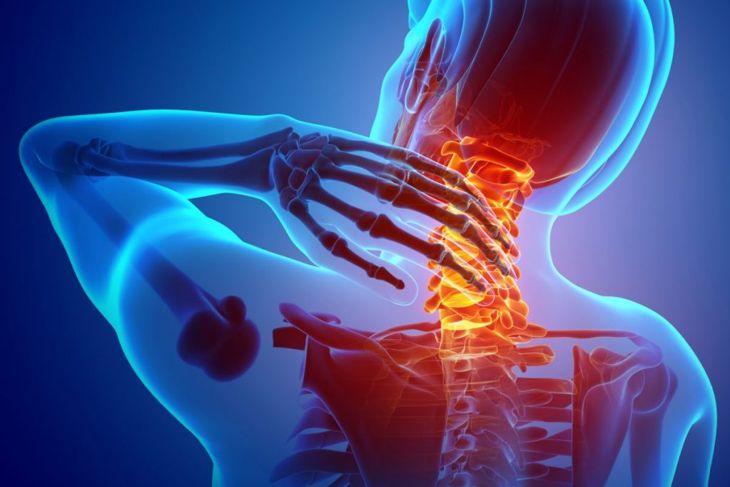Cervical spondylotic myelopathy sounds frightening, and you might wonder why you have it, how you got it, and most importantly, how will it affect you in the long-term. Simply checking off the symptoms of this form of spinal degeneration is not enough — needs to be diagnosed before you can rule out other causes, because its symptoms can mimic other diseases.
What is Cervical Spondylotic Myelopathy?
Cervical spondylotic myelopathy is a disease of the spine, specifically the neck bones. The degenerative nature of the disease means the spine continues to compress or squeezes the spinal cord, causing weakness and tingling in the extremities, and sometimes neck pain. The condition is incurable, but the symptoms can be mitigated.
Who Gets Cervical Spondylotic Myelopathy?
Cervical spondylotic myelopathy is usually related to age, and most commonly affects people 50 and older. It also can affect people who have had traumatic neck injuries or repetitive stress on their spinal column. It is the most common spinal disorder in people 55 years and older.
What are the Symptoms of Cervical Spondylotic Myelopathy?
If you have cervical spondylotic myelopathy, you may experience numbness or weakness of the hand, fingers, or arm, leading to reduced grip strength and clumsiness. You may also have tingling in your hands and arms. You may struggle with fine motor skills like handwriting or picking up small objects. Because cervical spondylotic myelopathy affects the neck, you may have coordination problems and lack of balance. Your neck may be stiff and painful, and you could experience headaches and the urgent need to urinate frequently. The seemingly random nature of these symptoms can make the condition difficult to diagnose.
What Risk Factors are Associated with Cervical Spondylotic Myelopathy?
Certain risk factors can contribute to the development of cervical spondylotic myelopathy, although they may not cause it directly. These include possible genetic links, smoking, and repetitive stress or occupational trauma. If you have had a neck injury, you may develop cervical spondylotic myelopathy. People who frequently travel long distances, sleep while sitting, or have congenitally fused spines are at risk for developing cervical spondylotic myelopathy. People whose jobs require long hours at the computer or hunched over documents, truck drivers, and commercial pilots are at also at higher risk for developing cervical spondylotic myelopathy.
How Do Doctors Diagnose Cervical Spondylotic Myelopathy?
Because cervical spondylotic myelopathy can mimic other diseases, correct diagnosis is vital to quick and effective treatment. Your doctor may use physical exams, X-rays, MRI (Magnetic resonance imaging) scans, and CT (Computed tomography) scans to diagnose cervical spondylotic myelopathy. When a doctor performs a physical exam, he or she is looking for symptoms of cervical spondylotic myelopathy and will evaluate the patient’s medical history. The doctor will look for bone spurs, poor alignment, spinal cord compression, ruptured or bulging disks, and other spinal issues.
How Do Doctors Treat Cervical Spondylotic Myelopathy?
Doctors treat cervical spondylotic myelopathy depending on the symptoms. Although there is no cure for the condition, treatment can be quite successful. Nonsurgical options include medications, collars, heat/cold therapy, and physical therapy. If these options have been exhausted and pain or discomfort continues, your doctor may recommend surgery to reduce the pressure on your spinal cord.
Medications
One very effective means of treating cervical spondylotic myelopathy is with pain and inflammation-relieving medications. There are both over-the-counter and prescription versions of these drugs on the market. Both oral and injection medications can be at useful in treating symptoms. Most doctors will not prescribe serious narcotic pain relievers unless the pain is severe, and even then will likely limit the treatment course to a short period.
Collars
Your doctor may recommend you wear a soft cervical collar to limit your neck motion and allow the muscles to relax. This is generally a short-term solution, as wearing a brace for a long time can cause your neck muscles to weaken. Your doctor may recommend that you wear the collar only during certain times or activities.
Heat and Cold Therapy
Sometimes applying heat or cold to your neck will help with the pain and inflammation. Your doctor or physical therapist can recommend which option will best relieve pain for each situation or symptom. Be sure to follow your doctor’s or physical therapist’s instructions while using heat or cold therapy and take care not to burn or freeze the skin.
Physical Therapy
At physical therapy appointments, a physical therapist will teach you stretching and strengthening exercises that will help increase neck flexibility, improve your posture, and strengthen your neck muscles so that you put less stress on your neck and spine. The therapist may also physically stretch your muscles and joints to relieve the tension.

 Home
Home Health
Health Diet & Nutrition
Diet & Nutrition Living Well
Living Well More
More




















